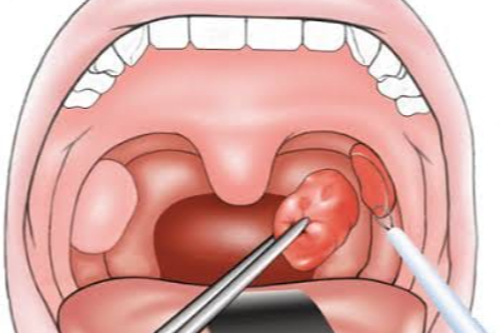
A Tonsillectomy with Coblation in Nagpur is a surgical procedure use to remove the tonsils, which are small masses of tissue located at the back of the throat. The tonsils are part of the body’s immune system and help protect against infections, but in some cases, they may become enlarge or infect, leading to recurrent or severe throat infections, difficulty breathing, or other complications. In such cases, a tonsillectomy may be recommende.
Coblation is a technique use in tonsillectomy that combines radiofrequency energy with a saline solution.
Coblation tonsillectomy is considere by some to be associate with less pain and a faster recovery compare to traditional methods. However, the choice of technique may depend on various factors, including the patient’s specific condition, the surgeon’s preference, and the available technology at the medical facility.
As with any surgical procedure, there are potential risks and complications, and the decision to undergo a tonsillectomy should be made in consultation with a qualified healthcare professional based on the individual’s medical history and condition.
Symptoms with a tonsillectomy using coblation
Sore Throat: It’s common to experience a sore throat after a tonsillectomy, and this discomfort can persist for a week or more.
Pain: Coblation is believe to result in less postoperative pain compare to traditional methods, but some pain and discomfort are still expecte. Your healthcare provider will likely prescribe pain medications to manage the pain during the recovery period.
Swelling: Swelling of the throat and surrounding tissues is a typical response to surgery. This can contribute to difficulty swallowing and a feeling of fullness in the throat.
Ear Pain: Some individuals may experience referred pain to the ears, which can feel like earaches. This is due to shared nerve pathways between the throat and ears.
Bad Breath: During the healing process, bad breath is common. Maintaining good oral hygiene by gently brushing your teeth and tongue and staying hydrate can help minimize this.
Difficulty Eating and Drinking: It may be challenging to eat or drink normally for a few days. It’s important to stay hydrate and consume soft, cool, and bland foods initially.
Voice Changes: Temporary changes in your voice, including hoarseness, may occur due to irritation and swelling of the throat tissues.
Bleeding: While coblation is associated with less bleeding compared to traditional methods, some minimal bleeding is normal. However, if you experience significant bleeding, contact your healthcare provider immediately.
Fatigue: The body requires energy to heal, and it’s common to feel fatigue during the initial recovery period.
Controll Ablation Procedure
Anesthesia: The patient is typically under general anesthesia, meaning they are completely asleep and feel no pain during the surgery.
Insertion of Coblation Wand: A specialize coblation wand is inserte into the mouth and directe toward the tonsils.
Radiofrequency Energy and Saline Solution: The coblation wand releases radiofrequency energy that is surrounded by a gentle saline (saltwater) solution. The saline helps create a plasma field, allowing precise removal of tissue with minimal damage to surrounding structures.
Tonsil Removal: The surgeon uses the coblation wand to break down and remove the tonsil tissue. The procedure aims to reduce bleeding and minimize postoperative pain compared to traditional methods.
Closure: Once the tonsils are removed, any bleeding is controlled, and the surgical site may be closed if necessary.
Advantages with tonsillectomy using coblation
Reduced Thermal Damage:
- Coblation operates at lower temperatures compare to some traditional methods. This may result in reduce thermal damage to surrounding tissues, leading to potentially quicker healing and less postoperative pain.
Minimal Bleeding:
- Coblation is often associated with minimal blood loss during the procedure. This can be advantageous in terms of surgical visibility and may reduce the need for additional interventions to control bleeding.
Precision and Tissue Preservation:
- Coblation allows for precise removal of tissue while preserving the surrounding structures. This can be beneficial in minimizing damage to healthy tissues and reducing the risk of complications.
Faster Recovery:
- Some studies suggest that patients undergoing tonsillectomy with coblation experience faster recovery times and reduced postoperative pain compared to traditional methods. Quicker recovery may lead to earlier resumption of normal activities.
Reduced Postoperative Pain:
- The lower temperatures associated with coblation may result in less tissue damage and, consequently, reduced postoperative pain. Patients may experience less discomfort during the recovery period.
Lower Risk of Complications:
- The precise nature of coblation and its ability to minimize damage to surrounding tissues may contribute to a lower risk of complications, such as injury to adjacent structures or delayed healing.
Possibility of Outpatient Procedure:
- Due to the potentially faster recovery and reduced postoperative pain, tonsillectomy with coblation may be performed on an outpatient basis, allowing patients to go home on the same day as the surgery.
